Barcelona recently spent £142m on Philippe Coutinho in the winter transfer market which raised quite a few eyebrows. While there is no question that they have purchased a top quality player, the club has moved away from its policy of giving talented youngsters from their famous academy, La Masia, a chance in the first team, instead relying on proven stars to fill the gaps in their first team.
Keeping this in mind, we'll take a look at the top 5 players that the Catalan giants have nurtured, who have been instrumental in making them one of the best club sides of all time.
But first, let us talk about the academy itself.
La Masia literally translates to “The Farmhouse". Built in 1702, it did start out as a farmhouse. In 1979, it was first used by the club to house its young footballers who originated from outside Barcelona. Today, it holds more than 300 young players and has been instrumental in Barcelona's European success as well as the Spanish national team's 2010 FIFA World Cup, and the 2008 and 2012 European Championship wins.
The idea for the youth academy and it’s ideology was proposed to the then Barcelona President Josep Nunez by Johan Cruyff, the legendary Dutch and Barcelona player. The Academy teaches its pupils the application of a hybrid of ‘Total football’ propagated by the Dutch side of the '70s with the traditional Spanish one-touch play. The ‘Total Football’ approach requires the players to move in a fluid formation, where players can interchange positions quickly.
This technical aspect has been ingrained into the graduates of the academy from a very young age, and it was one of the reasons for Barcelona’s success from 2008-2014, their uncompromising belief in this philosophy of passing and moving the ball.
Here are the players who epitomise what La Masia stands for.
#5 Sergio Busquets
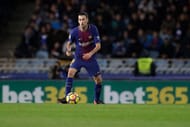
Vision, ball control, physical prowess, technical skills and accurate passing ability; Busquets has everything it takes to make a robust central defensive midfielder. Plus he is also capable of plugging in as a central defender when the need arises. He joined Barcelona’s youth ranks in 2005 after spells at various local clubs like CEF Barbera Andalucia and UE Lleida. His performances for the youth teams propelled him to the first team in 2008 and thus becoming an integral part of the team in a relatively short span of time.
His performances on and off the ball drew many plaudits leading to a Spanish national side call-up just one year after making his club debut. Although his contributions to the team are not highlighted enough in the media due to the exploits of Messi and co., his ability to dictate the tempo of his team is crucial as a deep-lying playmaker.
Vicente Del Bosque, Busquets ex-manager for his country sums him up best, “If you watch the whole game, you won't see Busquets- but watch Busquets and you will see the whole game”.
#4 Carles Puyol
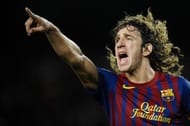
In a day and age where players switch loyalties for fame and money, Carles Puyol belongs to an elite list of players who have stayed loyal to the club they started off with. Although Puyol did have the chance to leave Barcelona, twice. The first in 1998 when Malaga CF came calling and Barcelona even agreed terms. However, it was Puyol’s refusal to leave his boyhood club that scuppered the deal.
The second time, a far more lucrative offer, was offered by Sir Alex Ferguson’s Manchester United in 2003, Barcelona then immersed in a huge financial crisis, were more than willing to sell their prized asset, however a true one-club man that Puyol is, he refused the transfer to the Red Devils and decided to stick with the Blaugrana. The rest is history.
Puyol went on to become the club captain after Luis Enrique's retirement in 2004. He was the undisputed leader of a team that dominated European football for half a decade. Known as a tenacious and a no-nonsense central defender, it is perhaps hard to imagine that Puyol started his career at La Masia as a goalkeeper. However, after injury problems pertaining to his shoulder, he switched to a centre-forward, then to a defensive midfielder and finally settled down in Barcelona’s B team as a right-back. In hindsight, the fans will be glad he switched to the position he is best known for, centre-back, which he made his own for a number of years.
Not one of the most technically gifted players that La Masia has produced, but he more than made up for it with his tenacity and reading of the game. He said in 2010,” I did not have Romario's technique, Overmars's pace or Kluivert's strength. But I worked harder than the others. I was like the student who is not as clever, but revises for his exams and does OK in the end.”
#3 Andres Iniesta
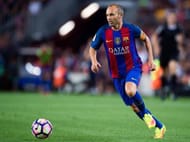
Iniesta is not just a very good football player; he is a work of art. Widely regarded as the best midfielder of his generation as well as one of the greatest midfielders of all time, Andres Iniesta has it all. A unique blend of talent, technique, and temperament, Iniesta glides through the football pitch.
His telepathic partnership with Messi and Xavi formed a trio which took the footballing world by storm. If you are a true football fan, you cannot hate Iniesta. As a testament to his bewitching football prowess, he remains one of the only three Barcelona players, after Diego Maradona and Ronaldinho, to receive a standing ovation at the Santiago Bernabéu, home of Barcelona’s arch rivals Real Madrid. Such is the respect the man holds even in the hearts of his opponents.
At La Masia, Iniesta originally started as a defensive midfielder, but his skill on the ball, work ethic, and inventiveness saw him make progress as a playmaker. Such is his versatility that he has played as a false winger, central midfielder, deep midfielder and just behind the striker and has always been excellent.
Winner of multiple European crowns both for club and country as well as lifting the World Cup with Spain in 2010 by scoring the winner in the final against the Netherlands, Andres Iniesta is the nice guy who finished first.
#2 Xavi Hernandez
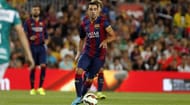
Cool. Calm. Collected. Always. Without Xavi, it would have been impossible for Barcelona to play the Tiki-Taka brand of football. His ability to find and exploit space as a deep-lying playmaker, along with his partnership with Iniesta in the midfield was a lethal combination not only for the club but also for the national side. The two rarely gave the ball away and left the opposition’s midfield dizzy after they entered the duo's carousel.
Xavi started at La Masia at the tender age of 11, making his first-team debut against Mallorca in August 1998. Since then, he has played 700 matches, scored 82 goals and made more than 180 assists for over 50 players, thus being widely regarded as the greatest Spanish player ever.
He had a 91% passing success rate at the 2010 World Cup and made 57 accurate forward passes in the final itself. That is how Xavi breaks the opposition down, by continuously bombing the rival's defence with pinpoint through balls and overhead lobs for his side’s forwards and rampaging full-backs, when the rival defence does clear their penalty area from a Barcelona attack, the ball is invariably collected in the midfield by Xavi and he orchestrates another attack, thus creating an unrelenting pressure cooker situation for the opposition for the entire 90 minutes of the game.
Xavi truly embodies what the philosophy of La Masia preaches. If Pep Guardiola was the prototype of the pivotal midfielder, Xavi is its custodian.
#1 Lionel Messi
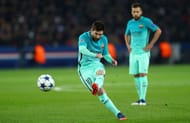
A record-tying 5 Ballon d’Ors, 4 European Golden Shoes, 29 trophies with Barcelona including 8 La Liga titles, 4 Champions League titles, 5 Copa del Rey, most official goals scored in La Liga (365), a La Liga season (50), a club football season in Europe (73), a calendar year (91), El Clasico (26), most assists in La Liga (144) and Copa America (11), Winner of the 2005 FIFA World youth Championship and Olympic Gold medalist for his country. The Greatest player ever? No one even comes close.
It would be unfair to say that La Masia taught Messi how to play because what Lionel Messi does with a football cannot be taught or practised, what he does was thought to be impossible until he came into the footballing world. He is to football what Beethoven is to Music, what Da Vinci is to Art, what Shakespeare is to Literature: A Genius.
The world does owe gratitude to the scouts at La Masia for recognising the greatness of the man when he was a boy suffering from growth hormone deficiency. Barcelona took a chance, relocated him to Spain from Argentina and agreed to pay for his medical treatment. What happened next will go down as football folklore. A Messi(ah) was born and changed the footballing world forever.
Some experiences in life cannot be described, they can only be experienced. Watching Messi play is one such experience. Watch him play, and thank the Almighty that we have got to see one of His miracles in our lifetime.
